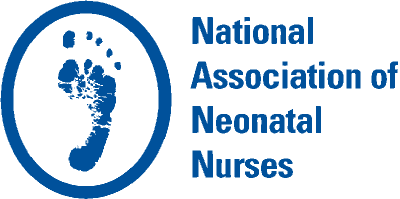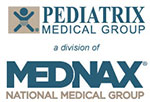Special Interest Group Update
Welcome to the newest NANN E-News section. In each issue, one of NANN’s special interest groups will share information in their area of focus.
Every Nurse Is a Research Nurse
Lisa Smotrich, BSN RN CCRN, Research SIG
Did you know that you are a nurse researcher? Whether or not you realize it, the research process is an integral part of everyday nursing care. Each time you look at a patient and think, “That doesn’t seem right” or “I wonder if there is a better way to do this,” you are taking the first steps to identifying a problem. When you say, “I think this product or process works better than that one,” you have started to formulate a research question. These are the first steps toward using research and evidence-based practice to improve the care of patients in your Neonatal Intensive Care Unit (NICU).
Implementation of evidence-based practices informed by research has been demonstrated to result in fewer adverse events, improved patient outcomes, and increased patient and family satisfaction (Melnyk, Fineout-Overholt, Giggleman, & Choy, 2017). In the second edition of Neonatal Nursing: Scope and Standards of Practice (American Nurses Association [ANA] & National Association of Neonatal Nurses [NANN], 2013), the use of evidence-based practices and research to drive neonatal nursing practice is identified as a core competency for neonatal nurses. Standard 9 of the Scope and Standards states that “the neonatal registered nurse incorporates evidence and research findings into practice” (ANA & NANN, 2013, p. 39). If this sounds intimidating to you, consider that research and nursing practice have more in common than one might realize.
The first step of the nursing process is making an assessment. In clinical care, this might mean making a physical assessment of your patient. Perhaps a 28-week-old patient is having frequent apneic episodes, or a former preemie is having emesis after transitioning to formula from donor breastmilk. For a nurse in a NICU management, administrative, or education role, might mean taking a more global look at the overall care of patients in the NICU. An example could be identifying an increase in pressure injuries on the unit during the previous month.
The first step in the research process is defining the research problem. One of the competencies identified in standard 9 of the Scope and Standards is the neonatal nurse’s ability to participate in the research process by identifying clinical problems that are relevant to neonatal nursing care (ANA & NANN, 2013). Each of the previous examples could be the start of a research question, but the key is to move beyond the black and white facts of the nursing assessment and ask one question: “Why?” When we approach our nursing care with a curious mind, we open ourselves to considering new and better ways of caring for our patients.
The second step of the nursing process is diagnosis. In this step, the nurse uses the information gained from the assessment, as well as previous knowledge and experience, to develop a nursing diagnosis or understanding of the situation. The neonatal nurse caring for the 28-week-old patient may discover that the frequent apneic episodes have put the patient at risk for impaired gas exchange and then consider whether the patient is receiving a sufficient dose of caffeine. The nurse caring for the patient having emesis after transitioning to formula may determine that the patient is at risk for imbalanced nutrition (receiving less than body requirements) and suspect that the emesis may be related to the new formula. The NICU manager reviewing the data on recent pressure injuries may discover in his or her assessment that all the patients were using a new continuous positive airway pressure (CPAP) device that had not previously been used in the unit.
The second and third steps in the research process are reviewing the existing literature related to the research question and developing a hypothesis. A review of the literature on apnea of prematurity might reveal that the recommended caffeine dose is higher than what the patient is receiving. In this case no further research may be needed, and the medical team should use this evidence to guide their care of the patient. A review of the literature about emesis in infants may lead the nurse to suspect pyloric stenosis or a milk protein allergy; these findings would then be used to further evaluate and treat the patient. After reviewing the literature, the manager may learn what strategies others have used to prevent pressure injuries from a CPAP device.
The third and fourth steps in the nursing process are planning and implementation. If the existing literature is conclusive, the evidence should be used to direct the planning and implementation phases of the nursing process—this is evidence-based practice. Unfortunately, use of such evidence does not always occur. Many common practices in NICUs across the country are based on tradition rather than evidence (EBP). Although nurses recognize the value of EBP, barriers such as lack of time for reading research literature, a perceived lack of authority to implement change, and lack of resources may make it difficult to implement EBPs (Cline, Burger, Amankwah, Goldenberg, & Ghazarian, 2017). Misconceptions, knowledge deficits, habits, and resistance to change also contribute to the continued use of outdated practices (Hanrahan et al., 2015).
Overcoming these barriers can be difficult, but it’s a battle worth fighting. Factors shown to support the use of research and implementation of EBP include mentorship, participation in a journal club, organizational support, shared governance structures, and dissemination of findings (Cline et al., 2017). All these factors contribute to a culture of curiosity in an organization. As EBPs are implemented, celebration of successes helps create momentum and convince skeptics of the value of research and EBP.
Even if you don’t “do research,” remember that you are still an integral part of the research process! The next time you wonder why you do something a certain way or someone tells you “that’s just the way it is,” don’t just accept it. Take that next step and ask “why?” If you have already been asking “why” and are not getting the answers you need, take the next step and reach out within your organization to find out what resources and mentorship opportunities are available to help you answer those questions. If you don’t have someone to connect with at your institution, NANN’s Research SIG is a great resource for supporting you as you embark on incorporating research and EBP into your work. If we all maintain a spirit of curiosity, together we can continue to improve neonatal nursing and give the best possible care to our patients.
References
American Nurses Association & National Association of Neonatal Nurses. (2013). Neonatal Nursing: Scope and Standards of Practice, 2nd edition.
Cline, G. J., Burger, K. J., Amankwah, E. K., Goldenberg, N. A., & Ghazarian, S. R. (2017). Promoting the Utilization of Science in Healthcare (PUSH) Project: A description of the perceived barriers and facilitators to research utilization among pediatric nurses. Journal for Nurses in Professional Development, 33(3), 113–119.
Hanrahan, K., Wagner, M., Matthews, G., Stewart, S., Dawson, C., Greiner, J., …, Williamson, A. (2015). Sacred cow gone to pasture: A systematic evaluation and integration of evidence-based practice. Worldviews on Evidence-Based Nursing, 12(1), 3–11.
Melnyk, B. M., Fineout-Overholt, E., Giggleman, M., & Choy, K. (2017). A test of the ARCC© model improves implementation of evidence-based practice, healthcare culture, and patient outcomes. Worldviews on Evidence-Based Nursing, 14(1), 5–9.


